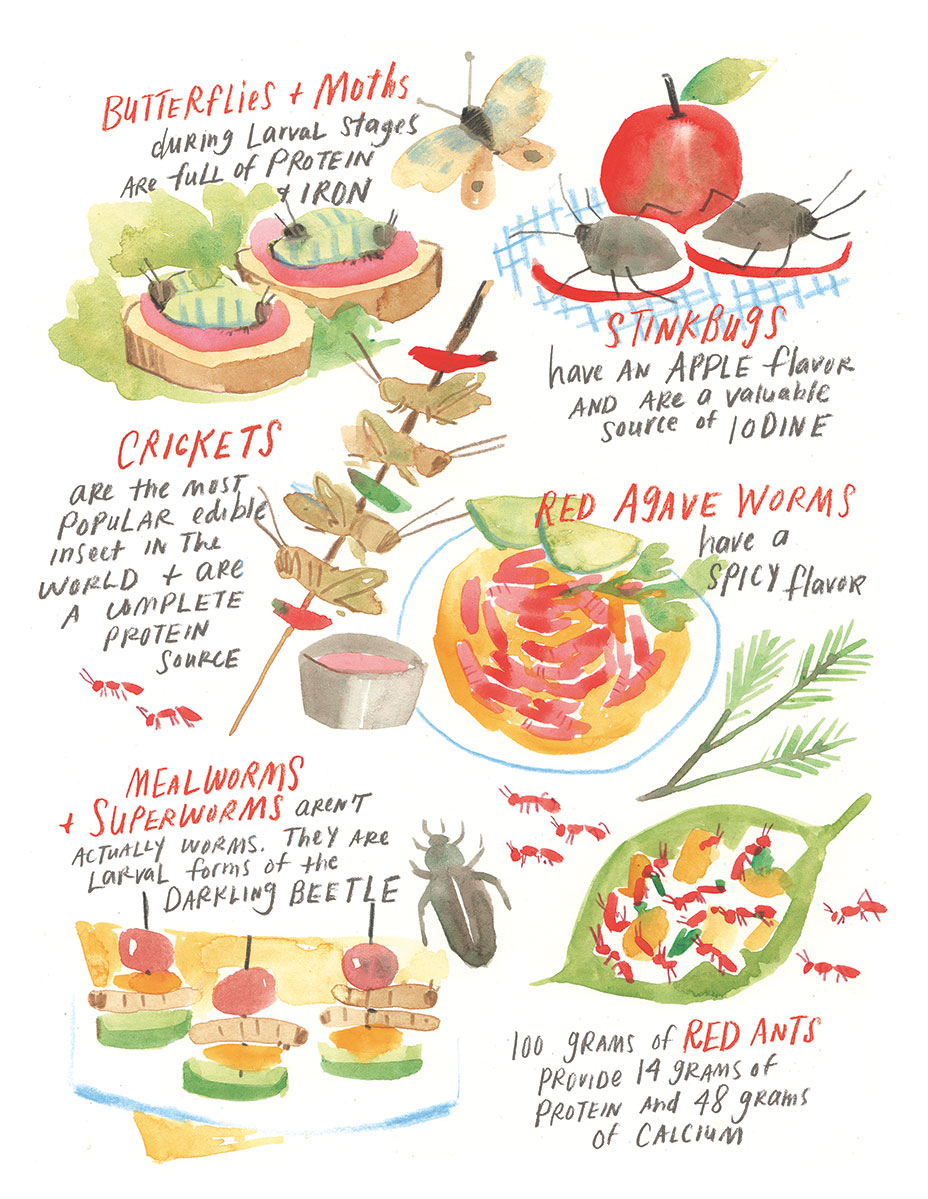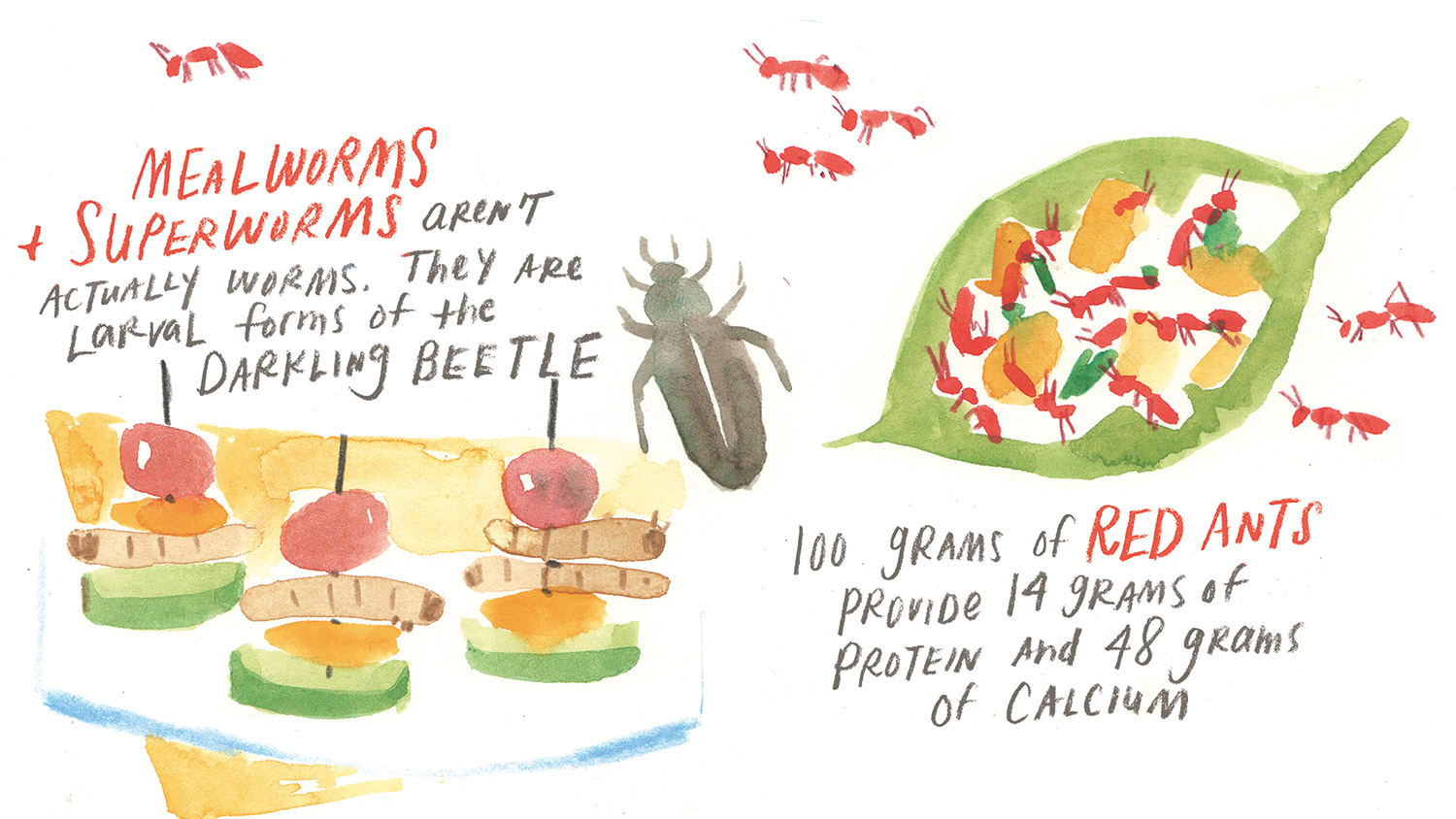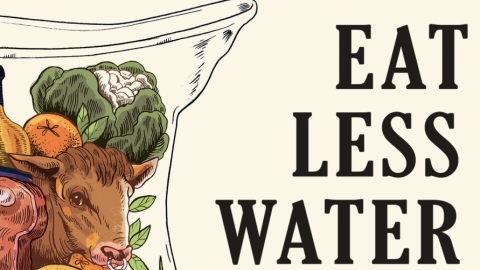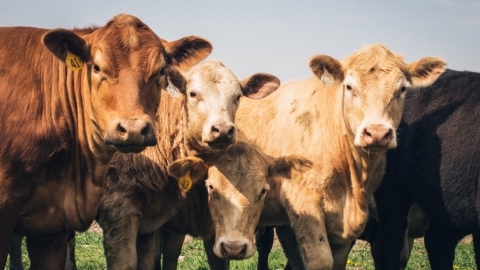Insects could be the sustainable protein source of the future
Entomophagy, the practice of eating insects, is happening in 80% of the world’s countries. This practice is as old as we are. Insects have been a reliable, abundant food source for humans and their ancestors for five million years.
Today insects are being called a “superfood,” since many contain amounts of protein comparable to beef, pork and chicken, in addition to iron, B12, calcium and all nine essential amino acids.
Raising and harvesting insects has compelling advantages over livestock. It requires much less water and land, involves no antibiotics or growth hormones, and emits substantially fewer greenhouse gases. Insects are also more efficient at converting feed into protein: a kilogram of crickets requires less than a fifth of the feed that cattle eat to yield the same amount of beef.
Interest in edible insects is growing, due to their potential to provide sustainable nutrition for a global population expected to top nine billion by 2050. To meet those demands, the United Nations estimates that food production will have to increase by 70%, and bugs will be an important source of protein.
The global market for edible insects is forecast to triple over the next five years to more than $1 billion, and North America should see the greatest growth. The U.S. Department of Agriculture has invested $550,000 since 2013 in research to develop a shelf-stable insect protein powder. The resulting cricket powder is mostly tasteless, which makes it easy to add to foods such as snack bars, baked goods and even ice cream.
- Two billion people are regularly consuming about 2,000 recorded species of edible insects.
- Insects are part of traditional diets found in more than 113 countries, including those in Asia, Africa and South America.
- Beetles make up 40% of all recorded edible insect species.
- Most insects are 100% edible, compared with about 40% of a cow.
- The largest insect festival is Purdue University’s “Bug Bowl,” started in 1990 in West Lafayette, IN. Around 30,000 people a year participate in insect-related activities, including eating them.

Cookbooks for inspiration:
- The Eat-a-Bug Cookbook by David George Gordon (Ten Speed Press, 2013)
- Creepy Crawly Cuisine by Julieta Ramos-Elorduy (Park Street Press, 1998)
- Eat Grub: The Ultimate Insect Cookbook by Shami Radia, Neil Whippey and Sebastian Holmes (Frances Lincoln, 2016)
Three rules for amateur bug eaters:
- Always cook insects.
- Avoid harvesting wild bugs from places where they could ingest pesticides.
- If you are allergic to seafood, you may be allergic to the exoskeletons of insects. Many insects share a common evolutionary ancestor with a group of crustaceans.










